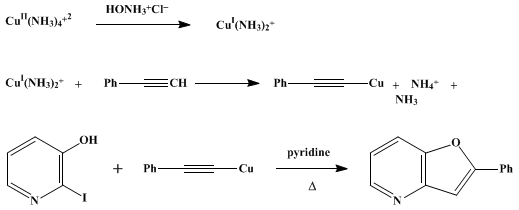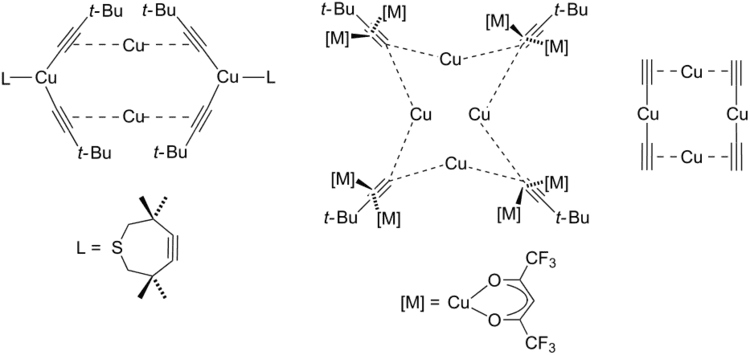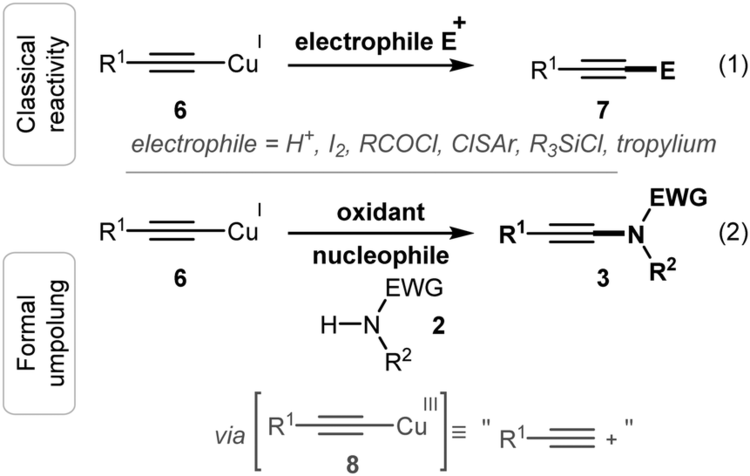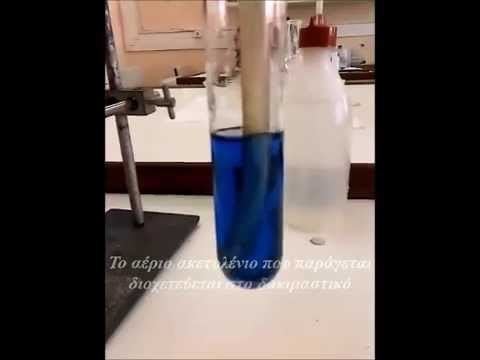Formula C2Cu2 | Molar mass 151.11 g/mol | |
 | ||
Copper(I) acetylide, or cuprous acetylide, is a chemical compound with the formula Cu2C2, known at least since 1856. In the common form (a monohydrate with formula Cu
2C
2.H
2O) it is a reddish solid, that easily explodes when dry.
Contents

Structure

Copper acetylide is a metal acetylide, a salt of the acetylide anion C2−
2 and the copper(I) cation Cu+
. It is similar to silver acetylide and calcium carbide, though it is not called carbide in literature.
Synthesis
Copper acetylide can be prepared by passing acetylene gas through copper(I) chloride solution in the presence of ammonia:
C2H2 + 2CuCl → Cu2C2 + 2HClThe acetylide then separates as a reddish precipitate.
Properties
When dry, copper acetylide is a heat and shock sensitive high explosive, more sensitive than silver acetylide.

Copper acetylide can form inside pipes made of copper or an alloy with high copper content, which may result in violent explosion. This was found to be the cause of explosions in acetylene plants, and led to abandonment of copper as a construction material in such plants. Copper catalysts used in petrochemistry can also possess a degree of risk under certain conditions.
Reactions
Copper acetylide is the substrate of Glaser coupling for the formation of polyynes. In a typical reaction, air is bubbled through a suspension of Cu
2C
2.H
2O in an amoniacal solution. The copper is oxidized to Cu2+
and forms a blue soluble complex with the ammonium species, leaving behind a black solid residue. The latter has been claimed to consist of carbyne, an elusive allotrope of carbon; more precisely of "polyacetylyde" anions capped with residual copper(I) ions,
−C(≡C−C≡)nC− Cu+
However that interpretation has been disputed.

Freshly prepared copper acetylide reacts with hydrochloric acid to form acetylene and copper(I) chloride. Samples that have been aged with exposure to air or to copper(II) ions liberate also higher polyynes H(−C≡C−)nH, with n from 2 to 6, when decomposed by hydrochloric acid. A "carbonaceous" residue of this decomposition also has the spectral signature of (−C≡C−)n chains. It has been conjectured that oxidation causes polymerization of the acetylide anions C2−
2 in the solid into carbyne-type anions .C(≡C−C≡)nC2− or polycumulene-type anions C(=C=C=)mC4−.
Thermal decomposition of copper acetylide in vacuum is not explosive and leaves copper as a fine powder at the bottom of the flask, while depositing a fluffy very fine carbon powder on the walls. On the basis of spectral data, this powder was claimed to be carbyne C(−C≡C−)nC rather than graphite as expected.
Applications
Though not practically useful as an explosive due to high sensitivity and reactivity towards water, it is interesting as a curiosity because it is one of the very few explosives that do not liberate any gaseous products upon detonation.
The formation of copper acetylide when a gas is passed through a solution of copper(I) chloride is used as a test for the presence of acetylene.
The reaction of Cu+ with alkyne occurs only if terminal hydrogen is present (as it is slight acidic in nature). Thus this reaction is used for identifification of terminal alkynes.
